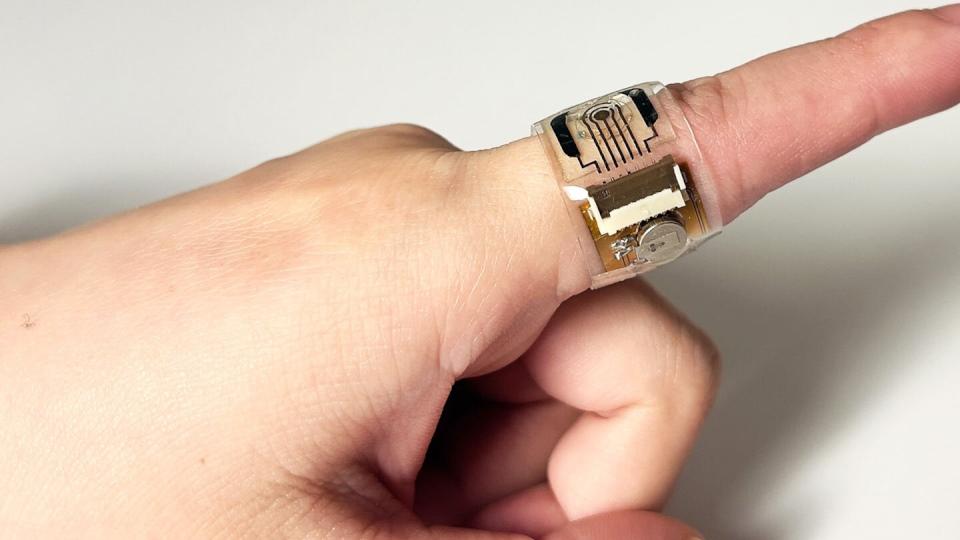Wearable biosensor can monitor oestrogen in sweat

Researchers in the US have developed a prototype of a wearable device that can monitor oestrogen in sweat and could play a role in women’s health and fertility.
According to a team from the California Institute of Technology, led by assistant professor of medical engineering Wei Gao, the discreet device, which can be worn around the finger like a ring, could sidestep the need for invasive blood testing and bulk analytical equipment, allowing oestrogen levels to be monitored at home in real-time.
High levels of oestrogen in the body can be a sign of breast and ovarian cancers, while low levels can result in osteoporosis, heart disease, and depression, so the hormone is routinely monitored as part of women’s healthcare.
The high-tech device is based on a flexible plastic membrane etched with tiny ‘microfluidic’ channels that draw in a fixed amount of sweat and deliver it to a sensor based on oestrogen-detecting aptamers – short, single-stranded nucleic acid molecules that can selectively bind to a specific molecule – that are attached to inkjet-printed gold nanoparticles and titanium carbide films.
If the aptamer binds to oestrogen, it releases a signal that is captured by an adjacent electrode and generates an electrical signal whose strength correlates with the level of hormone detected. That data can then be transmitted wirelessly to a smartphone app.
To account for any differences in sweat composition, the device also collects information about sweat pH, salt levels, and skin temperature, and uses them for real-time calibration.
The technology underpinning the device has also been deployed in other applications; for example, detecting the stress hormone cortisol, biomarkers for inflammation in the body, and the presence of COVID-19.
Gao said the inspiration to adapt it to measure oestrogen came from requests from people who were unsatisfied with the current techniques for monitoring the hormone.
"People often ask me if I could make the same kind of sweat sensor for female hormones because we know how much those hormones impact women's health," he said, adding that a key challenge facing the team was that oestrogen levels in sweat are around 50 times lower than in the blood, where the hormone is already present in fairly low quantities.
Lab testing has shown that the sensor can reliably track the fluctuations in oestrogen over the course of the reproductive cycle from menstruation to ovulation, with a close correlation with levels in the blood, so an early application could be to help women attempting to conceive a child, either naturally or through in vitro fertilisation.
It could also be used for women taking hormone replacement therapy (HRT), who need to be monitored to ensure they are taking the correct dosage.
The work on the development of the wearable has been published in the journal Nature Nanotechnology.












